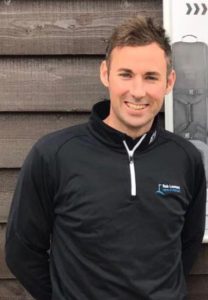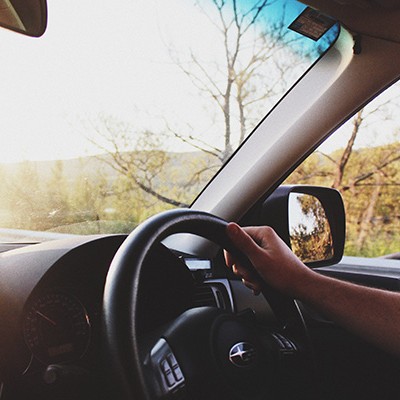While the positive health benefits of golf definitely outweigh the negatives, we do see some recurring golfing injuries at Harpenden Physiotherapy. This may be due to the fact that there are 3 thriving golf clubs in Harpenden and an aging population. Mark Twain famously called golf a ‘good walk spoiled’, but there are hundreds of golfers in Harpenden who would disagree with this. From walking several miles in the open air, gentle to fierce competition, keeping score (or not), socialising with friends and foes, the physicality of striking the ball, golf is a superb form of exercise.  Short hitters can outwit long hitters, good course management always beats booming drivers and a bad day can be saved by masterful putting.
At Harpenden Physiotherapy we work closely with local sports experts, tennis and rugby coaches to promote good practice. For our golfing patients, we are lucky enough to also be able to call on the expertise of Harpenden Common Golf Club Professional Rob Leonard. Rob’s reputation as a teaching professional is widely known and we suggest to all our golfing patients that they take any swing or technical problems to Rob. Even just a change in stance can prevent excess strain on your hip or knee. I will let Rob speak for himself.
“My name is Rob Leonard, I have been coaching golf for over 15 years and in my experience it is vital you have the correct posture and technique to enjoy the game without pain.Â
Around the world, golf is enjoyed by millions of people, young and old. A challenging, fun and sometimes frustrating game, golf demands tremendous skill and concentration. Golf isn’t considered a risky sport, but injuries can occur. Most golf injuries are such as strains, sprains and fatigue. However if repeatedly swinging a club with the incorrect technique this can lead to pain in the lower back, wrist, elbow and shoulder.”
One of the great things about golf is that age is no barrier to success; golf stimulates the mind and body and should not be underestimated in a fight against inactivity and aging. However there are some things that can be done to prevent weakness and stiffness causing one of the common golfing complaints discussed below developing.
Common Golf Injuries
Low back pain – as we age the discs in our lower back become thinner and more brittle. The discs act as shock absorbers between our vertebrae, when they thin the vertebrae become closer together and the small joints connecting them start to wear and become arthritic. The rotational forces in a golf swing can irritate these joints and cause back pain. This can be combated by increasing our back and core strength through some easy exercises. Physiotherapy is useful to first loosen these joints. Our lower back muscles also become tight and strained which can impact on a golf swing. Regular sports massages can prevent a build-up of stiffness and tightness.
Plantar fasciitis – This extremely painful heel condition can develop for many reasons but one common cause is hard, stiff golf shoes when the ground is dry and uneven. We see more patients complaining of this in the early summer when seasonal golfers dust off their summer shoes that have been drying out at the back of the garage and march off to play 18 holes. The heel becomes bruised and the foot arches tighten. In most cases this could be avoided by some calf stretching before play and some cushioning in the shoe. Once plantar fasciitis develops it can be hard to shift so an early visit to the physiotherapist is highly recommended.
Hip pain – Hip degeneration can be exacerbated by excessive walking and is identified by groin pain which refers to the knee as the game progresses. However we believe that golf is also good for joint degeneration so we give patients footwear and insole advice alongside a course of hip strengthening exercises to keep our patients on the golf course.
Trochanter bursitis/gluteal tendinopathy – This is a very common golfing complaint. Symptoms include pain on the outside of the hip which worsens on walking and is painful to lie on at night. Patients usually have weakness in the Gluteal/buttock muscles through inactivity and fallen feet arches. Both of these causes can be resolved with the correct exercises and footwear advice from a physiotherapist.
Knee pain – Golfers usually suffer with pain on the inner side of the knee. The medial collateral knee ligament lies here and can develop a repetitive strain injury. This can be caused by poor stance and/or technique. Physiotherapy can resolve this but it is equally important to see your golf pro for some advice about how to adapt your swing to take the strain off the knee.
Rotator Cuff injuries and Elbow pain/tendinitis – I have seldom treated a golfer for so called ‘golfers’ elbow’ which is characterised by pain on the inner side of the elbow, however ‘tennis elbow’ (pain on the outside of the elbow and forearm) is a very common complaint. It is caused by excess use of the forearm, usually due to not turning and therefore not using enough rotation in your golf swing. This leads to overuse of your arms. Rotator cuff injuries can occur for the same reason. A trip to your golf pro for some swing tips and your physiotherapist to build up more muscle power in your arms and chest should cure this. Equipment is also important if you suffer with elbow or shoulder pain. Some golf balls are softer and easier on the arm on ball strike. Good grips are important too, if you have repetitive elbow problems, enlarging your grips can be beneficial.
Pre golf tour back pain and post golf tour back pain – Come Spring the birds start singing, the blossom covers our beautiful Harpenden hedgerows and golfers appear in the clinic unable to stand due to excruciating back pain. If they are sporting nice tans they are post golf tour and if not they are due to go on their spring golfing break – usually in 3 days! It is a twice-yearly spectacle, being repeated in the Autumn, and with some physiotherapy we usually manage to get them on a plane to Portugal/Spain or Scotland, if not at their competitive best, then at least able to get around the course and enjoy the 19th with their fellow golfers. Those we see post golf tour are given physiotherapy and exercises and a stiff lecture on strengthening their backs for next year. This is swiftly forgotten and we usually see them next Spring.
Golden rules for a golf tour
- Play a couple of times before you go if you only play once a year
- Don’t play every day for a week before you go if you are a regular golfer.
- If you use an electric trolley at home don’t suddenly feel like you can carry your clubs for 18 holes when you are abroad just because it is 80 degrees and you are wearing shorts.
- Don’t put your bag of clubs, shoes, all your balls (for a week) into your golf travel bag and carry it through Luton airport.
- Don’t wear new golf shoes.
- Do start preparing your body for the holiday with an easy exercise regime 6 weeks before departure.
An easy warm up routine to do on the tee before you tee off
1.Stand or sit. Hold a club with both hands and put it behind your head onto your shoulders. Rotate the stick as if you were paddling. Repeat 20 times.
- Stand or sit holding a club with your arms down and in front of you. Lift your arms straight up and then lower the stick behind your neck. Lift arms up again and then return to starting position. Repeat 10 times.
- Stand up straight with one hand on your hip and the other straight up. Bend over to the side with opposite arm reaching overhead. Keep your pelvis in mid-position. Hold for 10 seconds. Repeat 5 times.
- Sit on a chair with your legs apart and feet firmly on the floor. Hold a club behind your neck and twist rotate your upper trunk from side to side. Let your head follow the movement. Repeat 10 times.
- Stand with the leg to be stretched on a tee box. Flex your ankle and push your heel towards the tee box keeping your knee straight. Hold approx. 10 secs. – relax. Then bend your upper body forwards from your hips keeping your back straight. You should feel the stretching behind your knee and thigh. Repeat 5 times.
If you do feel a golf injury or niggle coming on, it is important to get it checked over so you can return to the game as soon as possible. Get in touch to discuss your treatment and to book an appointment.





